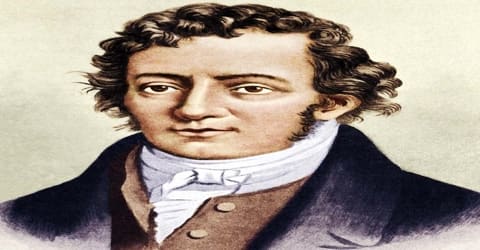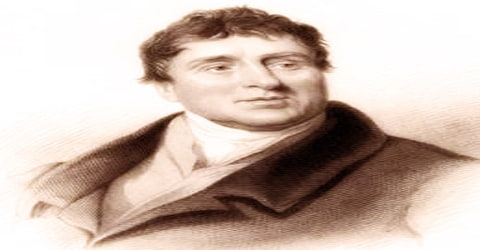Naguib Mahfouz – Novelist (1911-2006)
Full Name: Naguib Mahfouz
Date of Birth: December 11, 1911
Place of Birth: Cairo, Khedivate of Egypt
Date of Death: August 30, 2006 (aged 94)
Place of Death: Cairo, Egypt
Occupation: Novelist
Nationality: Egyptian
Notable works: The Cairo Trilogy
Notable awards: Nobel Prize for Literature (1988)
Early Life
Naguib Mahfouz, also spelled (Arabic: نجيب محفوظ) Najīb Maḥfūẓ was born on December 11, 1911, in Cairo, Egypt. He was an Egyptian novelist and screenplay writer, who was awarded the Nobel Prize for Literature in 1988, the first Arabic writer to be so honoured.
He is regarded as one of the first contemporary writers of Arabic literature, along with Tawfiq el-Hakim, to explore themes of existentialism. He published 34 novels, over 350 short stories, dozens of movie scripts, and five plays over a 70-year career. Many of his works have been made into Egyptian and foreign films.
In his free time, he wrote short stories and novels in Arabic. His major work, The Cairo Trilogy (Palace Walk, Palace of Desire and Sugar Street), follows three generations of Cairo families from WWI to the 1950s.
Until 1972, Mahfouz was employed as a civil servant, first in the Ministry of Mortmain Endowments, then as Director of Censorship in the Bureau of Art, as Director of the Foundation for the Support of the Cinema, and, finally, as consultant on Cultural Affairs to the Ministry of Culture. The years since his retirement from the Egyptian bureaucracy have seen an outburst of further creativity, much of it experimental. He is now the author of no fewer than thirty novels, more than a hundred short stories, and more than two hundred articles. Half of his novels have been made into films which have circulated throughout the Arabic-speaking world. In Egypt, each new publication is regarded as a major cultural event and his name is inevitably among the first mentioned in any literary discussion from Gibraltar to the Gulf.
Educational and Working Career
After completing his secondary education, Mahfouz was admitted in 1930 to the Egyptian University (now Cairo University), where he studied philosophy, graduating in 1934. By 1936, having spent a year working on an M.A. in philosophy, he decided to discontinue his studies and become a professional writer. Mahfouz then worked as a journalist for al-Risala, and contributed short stories to el-Hilal and Al-Ahram.
After receiving his bachelor’s degree in Philosophy from Cairo University in 1934, Mahfouz joined the Egyptian civil service, where he continued to work in various positions and ministries until retirement in 1971. He served first as a clerk at Cairo University, then, in 1938, in the Ministry of Islamic Endowments (Awqaf) as parliamentary secretary to the Minister of Islamic Endowments. In 1945, he requested a transfer to the al-Ghuri Mausoleum library, where he interviewed residents of his childhood neighborhood as part of the “Good Loans Project.” In the 1950s, he worked as Director of Censorship in the Bureau of Arts, as Director of the Foundation for the Support of the Cinema, and finally as a consultant to the Ministry of Culture.
Writing Career
Naguib Mahfouz began writing when he was seventeen. His first novel was published in 1939 and ten more were written before the Egyptian Revolution of July 1952, when he stopped writing for several years. One novel was republished in 1953, however, and the appearance of the Cairo Triology, Bayn al Qasrayn, Qasr al Shawq, Sukkariya (Between-the-Palaces, Palace of Longing, Sugarhouse) in 1957 made him famous throughout the Arab world as a depictor of traditional urban life. With The Children of Gebelawi (1959), he began writing again, in a new vein that frequently concealed political judgements under allegory and symbolism. Works of this second period include the novels, The Thief and the Dogs (1961), Autumn Quail (1962), Small Talk on the Nile (1966), and Miramar (1967), as well as several collections of short stories.
Mahfouz published 34 novels, over 350 short stories, dozens of movie scripts and five plays over a 70-year career. Before the Nobel Prize only a few of his novels had appeared in the West.
Most of Mahfouz’s early works were set in Cairo. Abath Al-Aqdar (Mockery of the Fates) (1939), Rhadopis (1943), and Kifah Tibah (The Struggle of Thebes) (1944), were historical novels, written as part of a larger unfulfilled project of 30 novels. Inspired by Sir Walter Scott (1771–1832), Mahfouz planned to cover the entire history of Egypt in a series of books. However, following the third volume, he shifted his interest to the present and the psychological impact of social change on ordinary people.
In his works, he described the development of his country in the 20th century and combined intellectual and cultural influences from East and West. His own exposure to the literature of non-Egyptian culture began in his youth with the enthusiastic consumption of Western detective stories, Russian classics, and such modernist writers as Marcel Proust, Franz Kafka and James Joyce. Mahfouz’s stories are almost always set in the heavily populated urban quarters of Cairo, where his characters, mostly ordinary people, try to cope with the modernization of society and the temptations of Western values.
Mahfouz stopped writing for some years after finishing the trilogy. Disappointed in the Nasser régime, which had overthrown the monarchy in 1952, he started publishing again in 1959, now prolifically pouring out novels, short stories, journalism, memoirs, essays, and screenplays.
Mahfouz’s central work in the 1950s was the Cairo Trilogy, which he completed before the July Revolution. The novels were titled with the street names Palace Walk, Palace of Desire, and Sugar Street. Mahfouz set the story in the parts of Cairo where he grew up. The novels depict the life of the patriarch el-Sayyed Ahmed Abdel Gawad and his family over three generations, from World War I to the 1950s, when King Farouk I was overthrown.
Tharthara Fawq Al-Nīl (Adrift on the Nile, 1966) is one of his most popular novels. It was later made into a film during the régime of Anwar al-Sadat. The story criticizes the decadence of Egyptian society during the Nasser era. It was banned by Sadat to avoid provoking Egyptians who still loved former president Nasser. Copies were hard to find prior to the late 1990s.
He stated in a 1998 interview, he “long felt that Nasser was one of the greatest political leaders in modern history. I only began to fully appreciate him after he nationalized the Suez Canal.”
In the 1960s, Mahfouz further developed the theme that humanity is moving further away from God in his existentialist novels. In The Thief and the Dogs (1961) he depicted the fate of a Marxist thief, who has been released from prison and plans revenge.
In the 1960s and 1970s Mahfouz began to construct his novels more freely and to use interior monologues. In Miramar (1967) he developed a form of multiple first-person narration. Four narrators, among them a Socialist and a Nasserite opportunist, represent different political views. In the center of the story is an attractive servant girl. In Arabian Nights and Days (1981) and in The Journey of Ibn Fatouma (1983) he drew on traditional Arabic narratives as subtexts. Akhenaten: Dweller in Truth (1985) is about conflict between old and new religious truths. Many of his novels were first published in serialized form, including Children of Gebelawi and Midaq Alley which was adapted into a Mexican film starring Salma Hayek.
He espoused Egyptian nationalism in many of his works, and expressed sympathies for the post-World-War era Wafd Party. He was also attracted to socialist and democratic ideals early on in his youth. The influence of socialist ideals is strongly reflected in his first two novels, Al-Khalili and New Cairo, and also in many of his latter works. Parallel to his sympathy for socialism and democracy was his antipathy towards Islamic extremism.
Mahfouz had personally known Sayyid Qutb in his youth, when the latter was showing a greater interest in literary criticism than in Islamic fundamentalism; Qutb later became a significant influence on the Muslim Brotherhood. In fact, Qutb was one of the first critics to recognize Mahfouz’s talent in the mid-1940s. Mahfouz even visited Qutb when the latter was in hospital, during the 1960s, near the end of his life. In his semi-autobiographical novel, Mirrors, he drew a very negative portrait of Sayyid Qutb. He was disillusioned with the 1952 revolution and by Egypt’s defeat in the 1967 Six-Day War.
Mahfouz did not shrink from controversy outside of his work. As a consequence of his outspoken support for Sadat’s Camp David peace treaty with Israel in 1978, his books were banned in many Arab countries until after he won the Nobel Prize. Like many Egyptian writers and intellectuals, Mahfouz was on an Islamic fundamentalist “death list”. He defended Salman Rushdie after Ayatollah Ruhollah Khomeini condemned Rushdie to death in 1989, but also criticized his The Satanic Verses as “insulting” to Islam. Mahfouz believed in freedom of expression and, although he did not personally agree with Rushdie’s work, he did not believe that there should be a fatwa condemning him to death for it. In 1989, after Ayatollah Ruhollah Khomeini’s fatwa calling for Salman Rushdie and his publishers to be killed, Mahfouz called Khomeini a terrorist. Shortly after Mahfouz joined 80 other intellectuals in declaring that “no blasphemy harms Islam and Muslims so much as the call for murdering a writer.”
Mahfouz has received praise from American reviewers:
“The alleys, the houses, the palaces and mosques and the people who live among them are evoked as vividly in Mahfouz’s work as the streets of London were conjured by Dickens.” —Newsweek
“Throughout Naguib Mahfouz’s fiction there is a pervasive sense of metaphor, of a literary artist who is using his fiction to speak directly and unequivocally to the condition of his country. His work is imbued with love for Egypt and its people, but it is also utterly honest and unsentimental.” —Washington Post
“Mahfouz’s work is freshly nuanced and hauntingly lyrical. The Nobel Prize acknowledges the universal significance of his fiction.” —Los Angeles Times
“Mr. Mahfouz embodied the essence of what makes the bruising, raucous, chaotic human anthill of Cairo possible.” —The Economist
The appearance of The Satanic Verses brought back up the controversy surrounding Mahfouz’s novel Children of Gebelawi. Death threats against Mahfouz followed, including one from the “blind sheikh,” Egyptian-born Omar Abdul-Rahman. Mahfouz was given police protection, but in 1994 an Islamic extremist succeeded in attacking the 82-year-old novelist by stabbing him in the neck outside his Cairo home.
Subsequently, he lived under constant bodyguard protection. Finally, in the beginning of 2006, the novel was published in Egypt with a preface written by Ahmad Kamal Aboul-Magd. After the threats, Mahfouz stayed in Cairo with his lawyer Nabil Mounir Habib. Mahfouz and Mounir would spend most of their time in Mounir’s office; Mahfouz used Mounir’s library as a reference for most of his books. Mahfouz stayed with Mounir until his death.
Personal Life
Born into a lower middle-class Muslim family in the medieval Fatimid quarter of Cairo in 1911, Mahfouz was named after Professor Naguib Pasha Mahfouz (1882–1974), the renowned Coptic physician who delivered him. Mahfouz was the seventh and the youngest child, with four brothers and two sisters, all of them much older than him. The family lived in two popular districts of Cairo: first, in the Bayt al-Qadi neighborhood in the Gamaleya quarter in the old city, from where they moved in 1924 to Abbaseya, then a new Cairo suburb north of the old city, locations that would provide the backdrop for many of Mahfouz’s later writings. His father, Abdel-Aziz Ibrahim, whom Mahfouz described as having been “old-fashioned”, was a civil servant, and Mahfouz eventually followed in his footsteps in 1934. Mahfouz’s mother, Fatimah, was the daughter of Mustafa Qasheesha, an Al-Azhar sheikh, and although illiterate herself, took the boy Mahfouz on numerous excursions to cultural locations such as the Egyptian Museum and the Pyramids.
The Mahfouz family were devout Muslims and Mahfouz had a strict Islamic upbringing. In an interview, he elaborated on the stern religious climate at home during his childhood. He stated that “You would never have thought that an artist would emerge from that family.”
The Egyptian Revolution of 1919 had a strong effect on Mahfouz, although he was at the time only seven years old. From the window he often saw British soldiers firing at the demonstrators, men and women. “You could say … that the one thing which most shook the security of my childhood was the 1919 revolution”, he later said.
Mahfouz remained a bachelor until age 43 because he believed that with its numerous restrictions and limitations, marriage would hamper his literary future. “I was afraid of marriage . . . especially when I saw how busy my brothers and sisters were with social events because of it. This one went to visit people, that one invited people. I had the impression that married life would take up all my time. I saw myself drowning in visits and parties. No freedom.”
However, in 1954, he quietly married a Coptic Orthodox woman from Alexandria, Atiyyatallah Ibrahim, with whom he had two daughters, Fatima and Umm Kalthum. The couple initially lived on a houseboat in the Agouza section of Cairo on the west bank of the Nile, then moved to an apartment along the river in the same area. Mahfouz avoided public exposure, especially inquiries into his private life, which might have become, as he put it, “a silly topic in journals and radio programs.”
Death
He survived, permanently affected by damage to nerves of his right upper limb. After the incident Mahfouz was unable to write for more than a few minutes a day and consequently produced fewer and fewer works. He was died on August 30, 2006, in Cairo.
Honours
Mahfouz was awarded the 1988 Nobel Prize in Literature, the only Arab writer to have won the award.
Works
- A translation into Arabic of James Baikie’s Ancient Egypt (1932) مصر القديمة
- Whisper of Madness (1938) همس الجنون
- Mockery of the Fates (1939) عبث الأقدار. His first full-length novel, translated title in English Khufu’s Wisdom.
- Rhadopis of Nubia (1943) رادوبيس
- The Struggle of Thebes (1944) كفاح طيبة
- Cairo Modern (1945) القاهرة الجديدة
- Khan al-Khalili (1945)خان الخليلي
- Midaq Alley (1947) زقاق المدق
- The Mirage (1948) السراب
- The Beginning and the End (1950) بداية ونهاية
- Palace Walk (1956) بين القصرين (Cairo Trilogy, Part 1)
- Palace of Desire (1957) قصر الشوق (Cairo Trilogy, Part 2)
- Sugar Street (1957) السكرية (Cairo Trilogy, Part 3)
- Children of Gebelawi (1959) أولاد حارتنا
- The Thief and the Dogs (1961) اللص والكلاب
- Quail and Autumn (1962) السمان والخريف
- God’s World (1962) دنيا الله
- Zaabalawi (1963)زعبلاوي
- The Search (1964) الطريق
- The Beggar (1965) الشحاذ
- Adrift on the Nile (1966) ثرثرة فوق النيل
- Miramar (1967) ميرامار
- The Pub of the Black Cat (1969) خمارة القط الأسود
- A story without a beginning or an ending (1971) حكاية بلا بداية ولا نهاية
- The Honeymoon (1971) شهر العسل
- Mirrors (1972) المرايا
- Love under the rain (1973) الحب تحت المطر
- The Crime (1973) الجريمة
- Karnak Cafe (1974) الكرنك
- Stories from Our Neighbourhood (1975) حكايات حارتنا
- Respected Sir (1975) حضرة المحترم
- The Harafish (1977) ملحمة الحرافيش
- Love above the Pyramid Plateau (1979) الحب فوق هضبة الهرم
- The Devil Preaches (1979) الشيطان يعظ
- Love and the Veil (1980) عصر الحب
- Arabian Nights and Days (1981) ليالي ألف ليلة
- Wedding Song (1981) أفراح القبة
- One hour remains (1982) الباقي من الزمن ساعة
- The Journey of Ibn Fattouma (1983) رحلة ابن فطومة
- Akhenaten, Dweller in Truth (1985) العائش فى الحقيقة
- The Day the Leader was Killed (1985) يوم مقتل الزعيم
- The Hunger (Al-Go’a) (1986) الجوع
- Morning and Evening Talk (1987) حديث الصباح والمساء
- Fountain and Tomb (1988)
- Echoes of an Autobiography (1994)
- Dreams of the Rehabilitation Period (2004) أحلام فترة النقاهة
- The Seventh Heaven (2005)
- Dreams of Departure (2007; posthumous translation)
- Before the Throne (2009; posthumous translation) أمام العرش
















